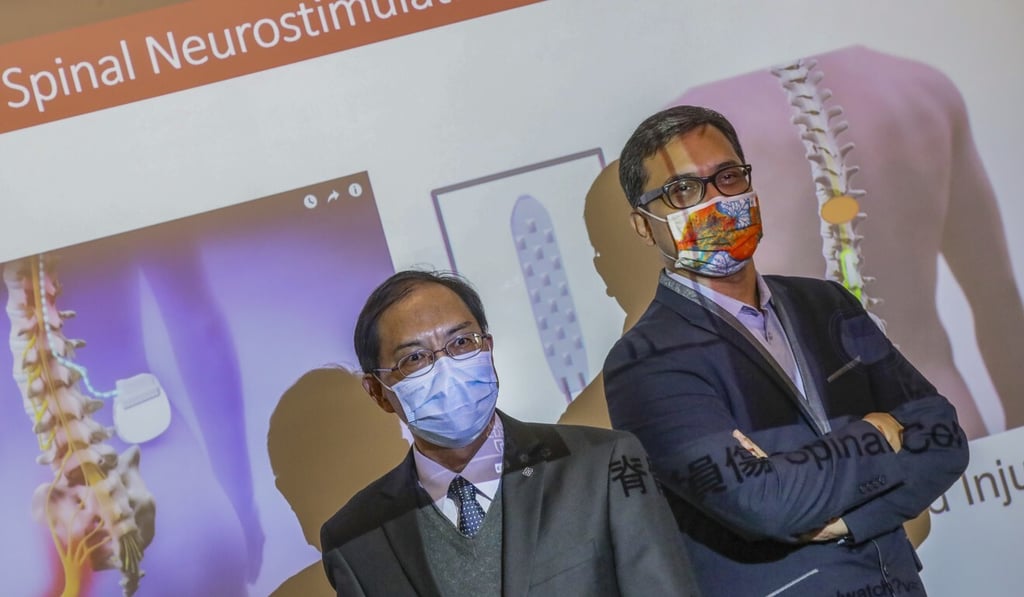Novel device developed by Hong Kong researchers could help patients with spinal injuries avoid invasive surgeries
- The new neurostimulator, developed by researchers at Polytechnic University, is small enough to be injected into a patient’s spine via a needle
- It is also powered by ultrasonic waves instead of conventional batteries, obviating the need for future surgeries to replace them

Hong Kong patients suffering from spinal cord injuries could soon be able to avoid invasive operations with a novel, non-surgically implanted neurostimulator developed by a local university and expected to come on the market in a few years’ time, according to researchers.
While using electrical stimulation to help patients with spinal cord injuries was not a new idea, Zheng Yong-ping, the chair professor of biomedical engineering at Polytechnic University, said the novel device was powered by ultrasonic waves transmitted externally in place of a conventional battery.
When the neurostimulator – which has not yet undergone clinical trials – is injected into a patient’s spine via a needle, it sends electric currents that stimulate nerve endings, potentially helping patients get rid of chronic pain and even heal paralysis.
“Current iterations of neurotransmitters on the market are battery-powered, which comes with obvious downsides, such as having to get an invasive surgery every time the battery dies,” Zheng said. “Our device requires a one-time-only procedure because it can convert ultrasound energy into electrical currents, thereby removing the need for battery changes.”

It was estimated the device itself would cost around US$2,000, which Zheng contended was a tenth the price of other similar devices on the market right now.
Zheng noted that because the neurostimulator did not require a battery, it was possible to create a device that weighed less than a gram. “Because this device is so small, it eliminates the need for large surgical incisions,” he said.